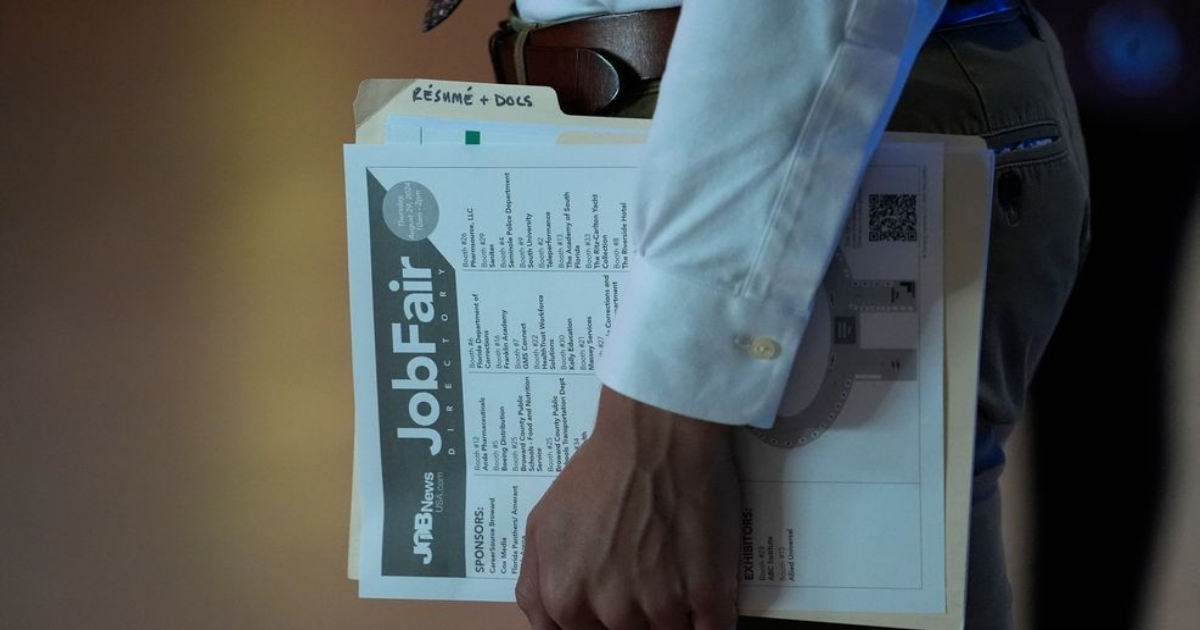(TNND) — American employers added 228,000 jobs to their payrolls in March, the Labor Department reported Friday.
Job gains beat expectations last month, though the unemployment rate ticked up.
And the labor market remains tough for folks who are out of work.
Labor market watchers are also waiting to see the full impact of President Donald Trump’s tariffs on the labor market.
Labor economist Aaron Sojourner, of the W. E. Upjohn Institute for Employment Research, said the jobs market will likely take a turn for the worse if employers judge tariffs will persist.
Bankrate Senior Economic Analyst Mark Hamrick said the March jobs report looks good on face value but warned of potential tariff disruptions to come.
“It will take time for the fog of this trade war to clear, including the impacts on consumers and the job market,” Hamrick said via email. “Because the monthly employment data is gathered around the 12th of the preceding month, during tumultuous times, this backward look is of limited use more so now than usual.”
The Bureau of Labor Statistics reported job gains in health care, in social assistance, and in transportation and warehousing.
Federal government employment declined by 4,000 in March, following a loss of 11,000 jobs in February.
The March tally of 228,000 jobs beat expectations. Sojourner said the forecast was for 140,000 new jobs.
And the job growth last month beat the average monthly gain over the last year.
Labor market growth for January and February was revised down by 48,000 jobs.
Sojourner said labor markets have been strong, the unemployment rate has been low, there’s been a high rate of worker job security, and wages have been growing.
But he said the market has been trending weaker.
It’s been harder for folks out of work to land a job, with the hiring rate generally the lowest that it has been in over a decade, Sojourner said.
LinkedIn previously reported that over half of Americans began the new year with hopes of landing a new job, but many felt stuck and frustrated by the search process.
A lot of folks are really frustrated,” LinkedIn career expert Andrew McCaskill told The National News Desk in January.
“So, it’s incredibly competitive,” McCaskill said. “I think it’s going to be competitive for the next 18 months or so. I think folks are trying to figure out where are the jobs. And, quite honestly, I think a lot of people are finding that what they’ve been doing to search for a job in previous years and previous economies, in previous sort of zeitgeists, just doesn’t work anymore.”
March’s unemployment rate ticked up to 4.2%, from 4.1% the month before.
The unemployment rate has been hovering between 4% and 4.2% for nearly a year now after a sub-4% streak for two straight years.
The number of unemployed people, at 7.1 million, changed little in March, BLS said.
And 1.5 million Americans are considered long-term unemployed, meaning they’ve been jobless for 27 weeks or more.
The unemployment rates for men (3.8%), women (3.7%), teenagers (13.7%), white people (3.7%), Black people (6.2%), Asians (3.5%), and Hispanics (5.1%) showed little or no change in March, BLS said.
RELATED STORY: LinkedIn offers 15 ‘Skills on the Rise’ to help job seekers stand out in crowded market
Average hourly wages are up 3.8% since last March.
The latest inflation reading from the consumer price index was 2.8% in February. The March CPI will be released next week.
For now, pay growth seems to be outpacing inflation.
Sojourner said the economy has added 1.88 million jobs over the last 12 months.
That’s compared to 2.35 million new jobs over the same period a year earlier and 3.83 million new jobs over the same period a year before that.
The economy was adding over 2 million jobs a year in the lead-up to the pandemic.
